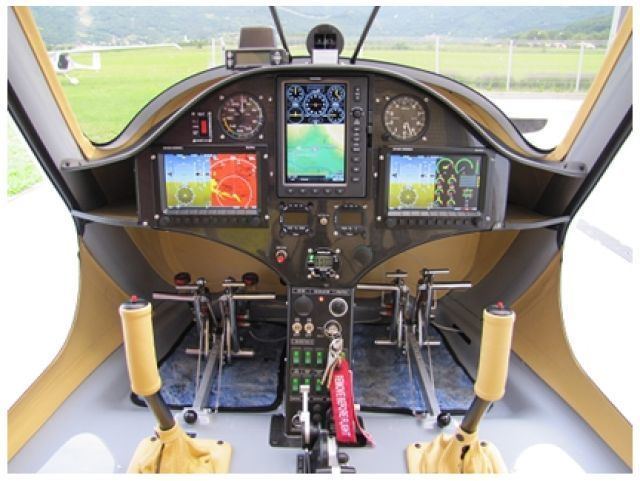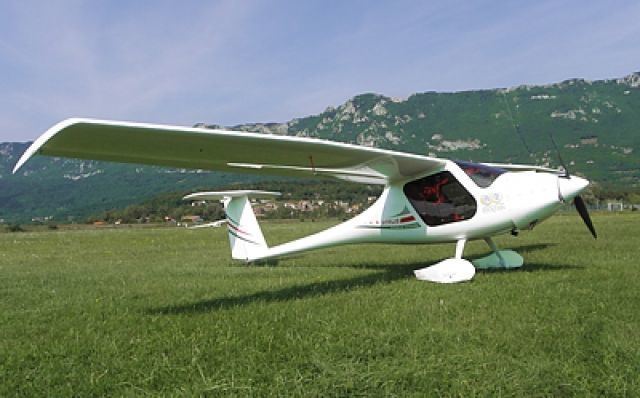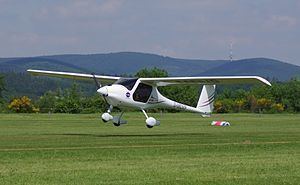Top speed 300 km/h Wingspan 11 m Number of seats 2 | Length 6.05 m Unit cost 69,000–159,000 EUR | |
 | ||
Pipistrel virus the fastest and most economical high speed light sports plane
The Pipistrel Virus is a light aircraft manufactured in Slovenia and sold as an ultralight, homebuilt kit, or light-sport aircraft.
Contents
- Pipistrel virus the fastest and most economical high speed light sports plane
- Pipistrel aircraft pipistrel virus light sport aircraft motorglider
- Design and development
- Operational history
- Specifications Virus SW 100 912
- References

Pipistrel aircraft pipistrel virus light sport aircraft motorglider
Design and development

It is a high-wing, cantilever monoplane of pod-and-boom configuration with a T-tail and air brakes. The cabin has two seats side-by-side. Its fixed undercarriage can be provided in either tricycle or tailwheel configuration. It is available in three models: the Virus 912 with a 12-metre wingspan, the Virus 912 SW 80 (for "short wing" and 80 hp) and the Virus 912 SW 100, both with a 10-metre wingspan. The Virus SW 100 has an uprated Rotax 912ULS engine producing 100 hp (75 kW). The SW 100 model cruises at 273 km/h (170 mph), which is 24 km/h (15 mph) faster than the long wing 80 hp (60 kW) version.

The aviation journalist Paul Bertorelli has criticized the aircraft's design for lack of cabin occupant crashworthiness. However, the manufacturer points out that this kind of issue is typical of aircraft in the LSA category. The design has no history of head trauma during the accidents that have occurred.
By February 2014 Pipistrel had produced more than 600 Sinus/Virus aircraft.

In April 2016 the Virus SW 121 received an EASA Full Type Certificate. The SW 121 is powered by a Rotax 912 S3 and is designed to meet EASA requirements for a Light Sports Aeroplane.
Operational history

The Virus won the NASA 2007 Personal Air Vehicle (PAV) Challenge and the 2008 General Aviation Technology (GAT) Challenge.

On 8 January 2012, Slovenian pilot Matevž Lenarčič launched an around-the-world flight attempt from Slovenia in a turbocharged Virus SW914. sponsored as the GreenLight World Flight. As part of his flight he flew past Mount Everest at an altitude of 29,344 ft (8,944 m), some 300 ft (91 m) above the peak's height; this portion of the journey was not authorized, as Nepal had cancelled his permit to make the flight right before he took off. He completed the flight on 19 April 2012, returning to Slovenia claiming to be the first person to complete such a flight without a copilot and having flown 62,000 miles (99,839 km) during the journey.
On 12 October 2015 Pipistrel won an international tender, issued by the Indian Ministry of Defence, to supply 194 light trainers to the Indian Air Force (72 aircraft), Indian Navy (12 aircraft) and National Cadet Corps (110 aircraft). The two-seat Pipistrel Virus SW 80 aircraft, known as the Garud after a bird in Hindu mythology, will be used for training of Flight Safety and Air Wing Cadets and the entire quantity of 194 aircraft must be delivered 30 months from the day of the first delivery. The contract includes an option for an additional 100 aircraft within the third year.
Specifications (Virus SW 100 912)
Data from Manufacturer's specification
General characteristics
Performance
